(Kadamba Kanana Swami, 19 December 2011, Cape Town, South Africa, Srimad Bhagavatam 7.13.46)
 When Krsna puts jewels on his body, the jewels get more beautiful. Usually it’s the other way around, you know what I mean, but in the case of Krsna, the jewels get more beautiful. Therefore devotees are interested in Krsna. In Jiva Goswami’s writing of the Gopala Campu about Krsna’s pastimes, some details are a little different or a little extra.
When Krsna puts jewels on his body, the jewels get more beautiful. Usually it’s the other way around, you know what I mean, but in the case of Krsna, the jewels get more beautiful. Therefore devotees are interested in Krsna. In Jiva Goswami’s writing of the Gopala Campu about Krsna’s pastimes, some details are a little different or a little extra.
He writes about that Aboriginal lady who had a basket with fruits. Krsna, as a small child, he saw how people were bartering and how they just would go from the house, bring some grains, give some grains to this lady and then she would give some of the fruits that she picked from the forest.
Krsna wanted some fruits so he came with some grain but because he is very small, he dropped all the little grains from his little hands along the way. So by the time that he had reached the lady, he had dropped all the grains. But the old lady, she didn’t mind at all. She just gave him so much fruits. She just piled him up with fruit and Krsna was very happily walking away with all the fruit. Then the old lady, she saw that her basket had filled up with jewels and that is where the story in the Krsna Book ends.
She just piled him up with fruit and Krsna was very happily walking away with all the fruit. Then the old lady, she saw that her basket had filled up with jewels and that is where the story in the Krsna Book ends.
But then Jiva Goswami continues… that old lady was walking away with all these jewels and she hadn’t even noticed it. Then after a while, she looked in her basket and she saw that the basket was filled with jewels and do you know what she did with them? Well, she she went back into the forest which was her home and there, she decided just to throw-out these jewels. She just threw them out of the basket and filled-up the basket with fruits because she wanted to see that smile of Krsna again when he was getting all those fruits. So she got more fruit and went back because that was more valuable than the jewels.
So she became a pure devotee who became more attached to Krsna than the material world. That is the simple nature of the paramahamsa. The paramahamsa more attached to Krsna than the material world and therefore the paramahamsa can say, “Anyway, you know, forget this material world. Jewels are alright but Krsna’s smile is so much better.” That is priceless.

 “We could see that many Spanish and South American devotees didn’t have access to ISKCON world news, because they couldn’t speak English,” Baladeva says. “We also saw that English-speaking devotees didn’t know much about what devotees were doing in the Spanish-speaking world.” -- Read more ›
“We could see that many Spanish and South American devotees didn’t have access to ISKCON world news, because they couldn’t speak English,” Baladeva says. “We also saw that English-speaking devotees didn’t know much about what devotees were doing in the Spanish-speaking world.” -- Read more ›  “We could see that many Spanish and South American devotees didn’t have access to ISKCON world news, because they couldn’t speak English,” Baladeva says. “We also saw that English-speaking devotees didn’t know much about what devotees were doing in the Spanish-speaking world.” -- Read more ›
“We could see that many Spanish and South American devotees didn’t have access to ISKCON world news, because they couldn’t speak English,” Baladeva says. “We also saw that English-speaking devotees didn’t know much about what devotees were doing in the Spanish-speaking world.” -- Read more › 
 Sri Radha-Kund Mahabhoga Darshan 31/12.2013
Sri Radha-Kund Mahabhoga Darshan 31/12.2013 
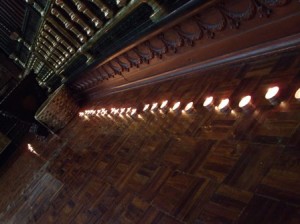
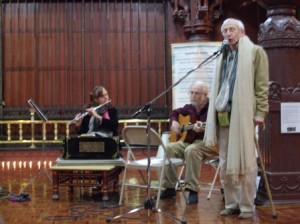
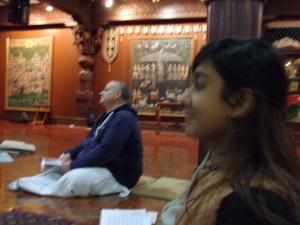
 On 31st Dec, 2013 many people gathered at Iskcon Detroit - The Bhaktivedanta Cultural Centre to welcome the new year 2014. We had dance, drama, cultural program and ecstatic kirtan whole night with sumptuous prasadam for everyone.
On 31st Dec, 2013 many people gathered at Iskcon Detroit - The Bhaktivedanta Cultural Centre to welcome the new year 2014. We had dance, drama, cultural program and ecstatic kirtan whole night with sumptuous prasadam for everyone. 







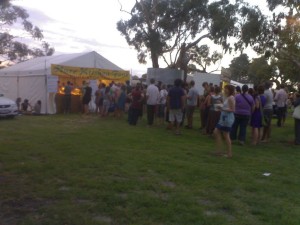
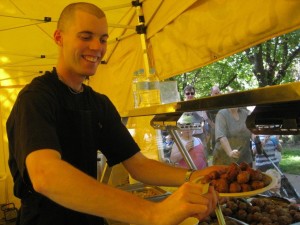



 Indradyumna Swami: Today myself and Sri Prahlada, who is visiting me from Australia, went on a short parikrama of Vrindavan. Along the way we met my parikrama guru, Deena Bandhu prabhu, who we followed to the Radha Gokulananda temple. His love for Vrindavan is contagious!
Indradyumna Swami: Today myself and Sri Prahlada, who is visiting me from Australia, went on a short parikrama of Vrindavan. Along the way we met my parikrama guru, Deena Bandhu prabhu, who we followed to the Radha Gokulananda temple. His love for Vrindavan is contagious!  Banka Bihari, a woman that I have known for thirty years since she first discovered the powerful message of Krishna, was relaying to a small group of us how she gets people to stop and hear her spiel at the mall
Banka Bihari, a woman that I have known for thirty years since she first discovered the powerful message of Krishna, was relaying to a small group of us how she gets people to stop and hear her spiel at the mall 


 Learn how to cook healthy and quickly for Krishna. What I take every night for prasadam. My favorite :-)
Learn how to cook healthy and quickly for Krishna. What I take every night for prasadam. My favorite :-) 